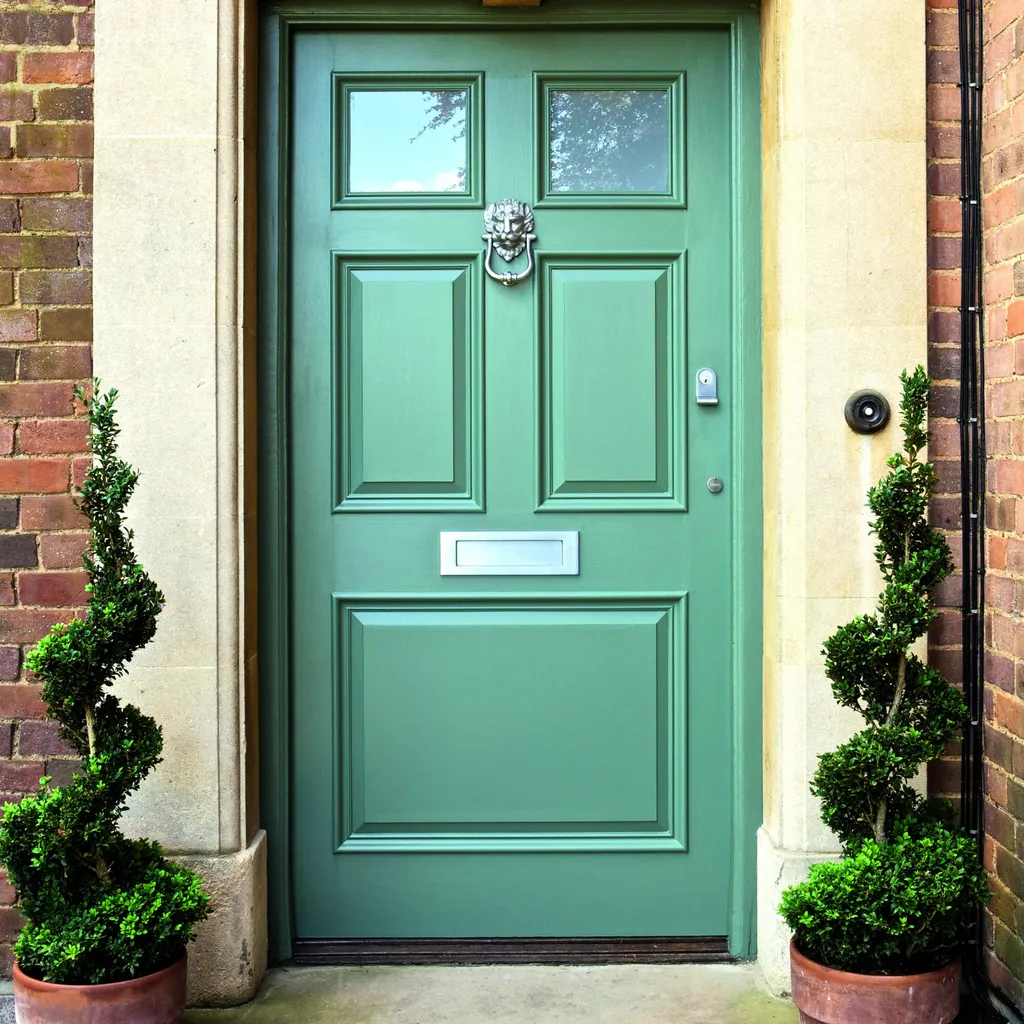How to choose a front door for a period property
As a means of providing security from both intrusion and the weather, as well as saying something about the inhabitants of a house and the fashions and technology of the time, the front door has always held centre stage.
‘It’s important to think about style. A good front door will enhance the outward appearance of a house and the wrong one can let it down badly, but people don’t need to be too worried about it,’ says Rupert. ‘Plenty of Georgian houses have 19th-century additions. The style and size are what matter. Old doors were not made to standard sizes and, although you can add bits and cut bits off, it’s easier not to have to do so.’
Rarity and quality underpin the value of a door and size also matters: for a large example or those made in oak, expect to pay £500 or more, but smaller panelled doors made from soft wood usually cost around £150. ‘Doors made from 1900 onwards are usually machine-made from Douglas fir whereas, on earlier 19th-century panelled doors, the moulding is floating and often very decorative, which enhances the door,’ says Rupert Woods of English Salvage.
If you can’t source an original door in the style that fits your home, a replica can be custom-made by Timber Windows, which also stocks a selection of heritage designs in its conservation range. In addition, the company is able to source appropriate ironmongery and glazing.
The best front door for Tudor houses:
The Tudor entrance, known as a four-centred door, is characterised by a distinctive flat-topped arch, and made from unpainted oak in a plank construction and sometimes the heads of nails were used to provide decoration.

The best front door for Georgian houses:
By the early 18th century, styles had moved on. ‘The front door was usually one of tall proportions, made in panelled construction, featuring six or more square and rectangular sections arranged in two vertical rows,’ says Rupert.
On grand houses these might be embellished with drop handles, scrolled knockers, decorative hinges and intricate rim locks made in iron or brass. As the 18th century progressed, the fashion for fanlights meant doors tended to become shorter. Typically painted black or dark green, in grander houses these were made from oak, while deal (pine) was used in less wealthy homes. If you're not sure what colour to paint your period front door, consult our list of the best front door paint colours.
The Regency fascination with antiquity is reflected in doors of the late 18th and early 19th centuries, when rich reed mouldings were used to form geometric panels. By this time, door furniture included closing knobs, push plates, knockers and doorknobs, replacing the drop handles of the earlier decades.

The best front door for Victorian houses:
The building boom of the Victorian era means that plenty of the old doors you are likely to find today date from this time or later. The affluent used the entrance to their homes to show off their success – the more components the better. Colourful stained glass added decoration as well as light to hallways, while the comfort-conscious fitted the backs of some doors with curtain rails to insulate draughty hallways.
Letter openings appeared after 1840, following the advent of the Penny Post. Initially, these were small and vertically positioned in the door. Meanwhile, the Arts and Crafts period of the late 19th century looked back to medieval designs with plank- constructed doors, often featuring elaborate iron hinges and latches rather than doorknobs or handles.
How to restore a Victorian house
Is your Victorian home in need of some TLC? We show you where to start and who to call.
The best front door for 20th-century houses:
Doors became ever more varied in the 20th century. With modernist architecture came flush doors, and new combinations of metal, glass and wood were used to create doors inset with novel details such asglass panels, porthole windows or decorative geometric patterns.

